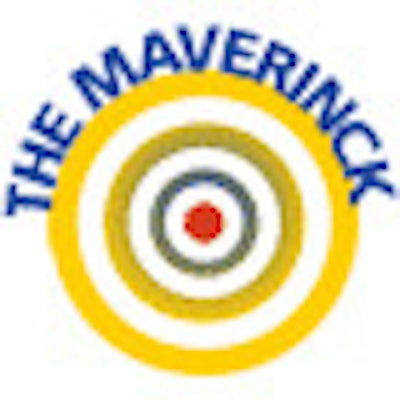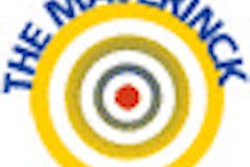
Editor's note: In his regular column, Europe's very own maverick radiologist, Dr. Peter Rinck, addresses the latest controversial topic. Find out now what's on his mind.
Two years ago my banker told me, beaming with joy, that his bank had helped a medical company go public and that he had bought some shares for me. "I have seen what they are doing, it's just fantastic: computer-aided detection and computer-aided diagnosis."
 Dr. Peter Rinck, PhD, Maître de Conférence/adjunct professor of medical imaging at the University of Mons, Belgium.
Dr. Peter Rinck, PhD, Maître de Conférence/adjunct professor of medical imaging at the University of Mons, Belgium.He was hardly stoppable on the phone when he explained to me what CAD can do and what the newcomer to the stock exchange will do: assisting any kind of doctor or paramedic in the interpretation of digital images, including CT, MRI, and PET. Like a pro, he talked about image processing, artificial intelligence, mammography, medical screening, and lung cancer. And they had something, some completely new technology, that nobody else had.
They must have invented something I didn't know about, I thought. I hadn't followed closely the development of CAD for 15 years. After several years doing research in automated information extraction from MR images, others and I had come to the conclusion that such methods are unreliable in clinical routine. A breakthrough would be good for the new company -- and hopefully good for me too.
Russian roulette
Some nights ago, I stumbled across an interesting and entertaining software program on the Internet. It was also a kind of computer-assisted diagnosis, created by Dmitry Chestnykh, a 28-year-old Russian software programmer.1
The algorithms of the program analyze the writing styles of people and ascribe them to an author. Works from 50 of the main authors of the English language have been fed into the system and can be compared to text samples. I tried it.
First, I typed in part of a column I had written last year. I received a diagnosis: "You write like H.P. Lovecraft." I had never heard of Lovecraft, but found out that he was an American author of fantastic and macabre shorts stories, and master of the Gothic tale of terror. It's an interesting description, and it challenged me.
Copy and paste is easy. So I pasted more columns into the "How do I write" form. The responses changed from Lovecraft to Arthur C. Clarke, back and forth. Clarke was another science fiction writer. Then I copied and pasted two pages of Ernest Hemingway's prose from his story "A clean and well-lighted place." It was written like Ernest Hemingway. I tried Hemingway again; he was now writing like James Joyce.
Joseph Conrad writes like Agatha Christie, Agatha Christie writes like Isaac Asimov or perhaps H.P. Lovecraft. Henry Wadsworth Longfellow's poem "A Psalm of Life" was written in the style of Charles Dickens.
I got more curious and pasted one of my columns translated into Russian in Cyrillic into the form. In Russian, I write in the style of Douglas Adams, who was British. Personally, I don't believe that I write science fiction or horror columns. Some of them might be parables.
The computer-assisted diagnostic program for literature works at random.
CAD in mammography, however, does not work at random. In a study published some weeks ago, Dr. Joshua J. Fenton of the University of California, Davis, and colleagues, analyzed data from more than 1.6 million film-screening mammograms carried out be-tween 1998 and 2006. They found: "CAD use during film-screen screening mammography in the United States is associated with decreased specificity but not with improvement in the detection rate or prognostic characteristics of invasive breast cancer."2
An accompanying editorial published in the same issue of the Journal of the National Cancer Institute is worthwhile reading -- for me it is the paper of the month.3 It's "CAD as CAD can." The author, Dr. Donald A. Berry from the M.D. Anderson Cancer Center in Houston, sums up as follows:
"An argument for the use of CAD with film or digital mammograms is that it will get better over time. Fine. Researchers and device companies should work to make the software ever better. But this should happen in an experimental setting and not while exposing millions of women to a technology that may be more harmful than it is beneficial."
When I recently checked my share portfolio, the value of the CAD company had dropped from 50 euros (around $70 U.S.) to 3 euros (around $4 U.S.). "Their programs seem not exactly to work as thought," my banker told me. "It's a write-off." Indeed.
Reference
- Chestnykh D. I write like. http://iwl.me. Accessed 14 September 2011.
- Fenton JJ, Abraham L, Taplin SH, et al. Effectiveness of computer-aided detection in community mammography practice. J Natl Cancer Inst. 2011;103(15):1152-1161.
- Berry DA. Computer-assisted detection and screening mammography: Where's the beef? J Natl Cancer Inst. 2011;103(15):1139-1141.
The comments and observations expressed herein do not necessarily reflect the opinions of AuntMinnieEurope.com, nor should they be construed as an endorsement or admonishment of any particular vendor, analyst, industry consultant, or consulting group.


















